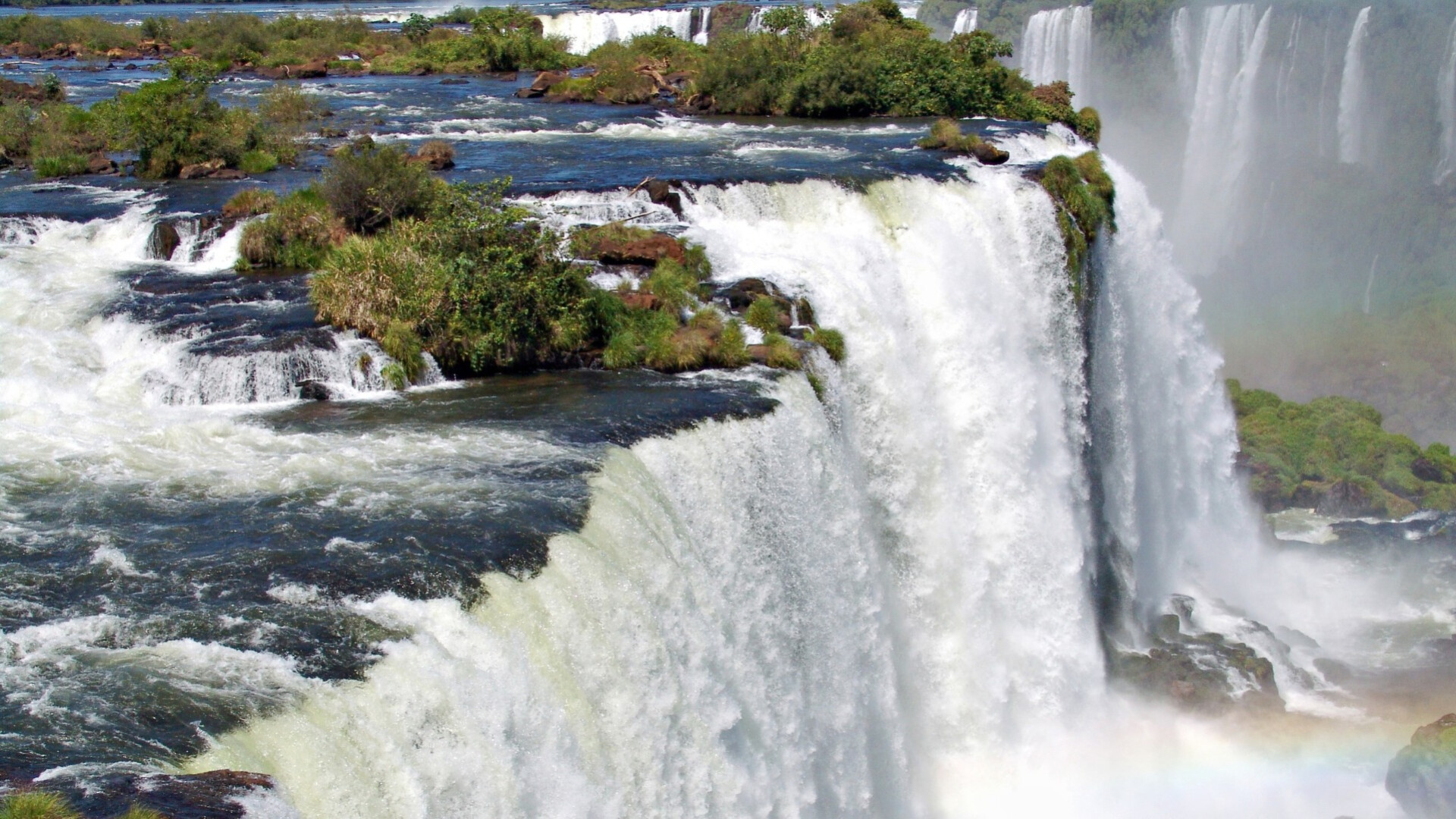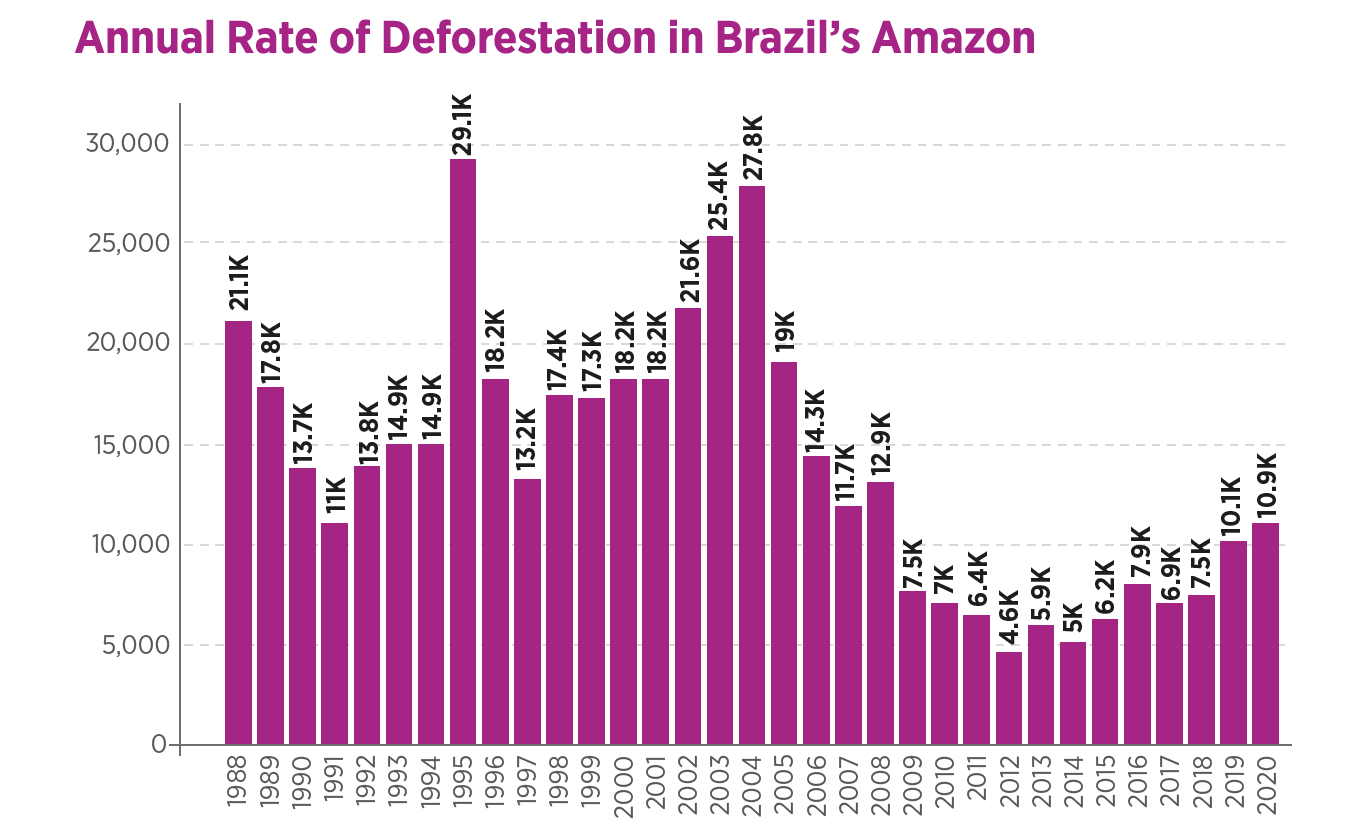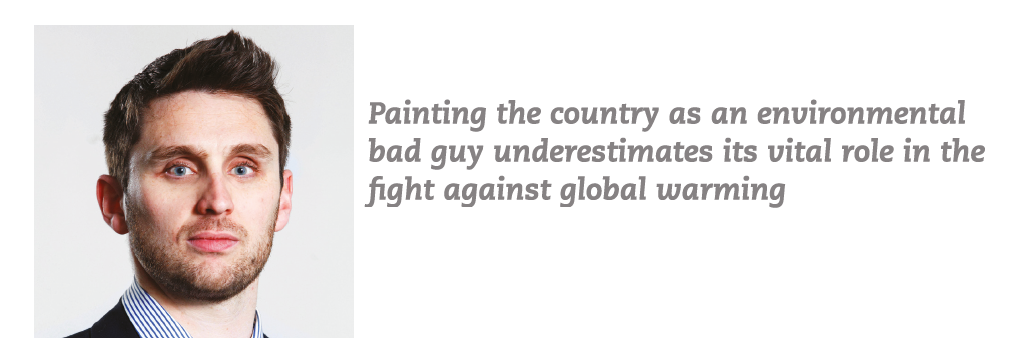Understanding Brazil and Climate Change
Painting the country as an environmental bad guy underestimates its vital role in the fight against global warming, writes Adam Patterson in Curitiba…

“A Amazônia é nossa” - the Amazon is ours - is a common Brazilian reaction to discussions about the world´s largest rainforest. The topic therefore reflects a larger debate about sovereign rights versus global patrimony - famously summarised by then Senator Al Gore in 1989: “Contrary to what Brazilians think, the Amazon is not their property, it belongs to us all.”
The discussion is a myriad of factors, interests and politics. Add into the mix, a controversial Brazilian president, Jair Bolsonaro, and we have all the ingredients for an environmental back-and-forth.
The Amazon’s importance is well established. It acts as a climate regulator, is home to a third of all known terrestrial plant and animal species and the enormous Amazon River contains 20% of the world’s flowing fresh water.
Nevertheless, myths and misinformation abound. Firstly, the oft-repeated claim that the Amazon is the 'world´s lungs' and provides 20% of global oxygen supply is based on a scientific misunderstanding. The Amazon produces lots of oxygen but also releases lots of CO2. Ultimately, oxygen from the Amazon doesn’t matter all that much, scientists say.
The second point is its sheer size, the forest´s biome is twice the size of India, bordering nine Brazilian states and seven other countries, making it extremely difficult to police adequately, especially for developing countries.
Thirdly, the rainforest is not an uninhabited wilderness. There are many cities. In Brazil, Manaus, Amazon state´s capital, and a major industrial zona franca, is an urban metropolis with two million inhabitants. Overall, 28 million Brazilians, around 13% of the total population live there - less than 1% are indigenous tribes who are allocated almost 14% of total land. Many are also small-scale farmers, as existing law stipulates that in rural properties, native vegetation should be kept to 80% of the land. Poverty is a leading factor in Amazon deforestation, illustrating a key environmental dilemma: how to reconcile economic development with conservation endeavours.
Old suspicions
Brazil contains 60% of the Amazon’s territory, divided into 287 conservation areas that cover 23% of the region, with over 30% being national parks and forests. In Brazil, the Amazon debate is shaped by the long-held suspicion that the real goal of foreigners is to control Brazil’s tropical wilderness and its biological and commodity riches. In this optic, the credibility of Western NGO’s is undermined by their commercial fundraising, celebrities for often sharing misinformation while suggestions from global leaders, like French president Emmanuel Macron, of giving the Amazon “international status” are the new face of colonial diktat.
Deforestation in the Brazilian Amazon made global headlines in 2019, due to wildfires and the election of the supposedly “anti-environment” new president in the same year. Yet the debate is also not recent. Since independence, Brazil has gazed uneasily at maps of the vast territory. From the 1960s the military government saw the region’s colonization as a national security priority, wanting to guarantee sovereignty, integrate the country’s remaining frontier region into modern capitalism and connect it with Brazil’s more populous and richer south. People were encouraged with economic incentives and land grants to develop agriculture. “Ocupar para não entregar” (occupy to avoid surrendering) was the slogan of the day.
While deforestation in Brazil remains much lower than its peak in 2004, activity has been on an upward trend since 2014 driven in part by increased cattle-ranching, soy cultivation and logging. During Bolsonaro´s first year deforestation hit 10.1km² - though it is worth noting that was 40% of the level of the first year of the ‘environmentally-friendly’ Worker´s Party administration in 2003.

Bolsonaro has certainly called for increased, and inclusive, economic activity in the Amazon, cut agency budgets and deregulated some environmental protections, though this is in line with his broader pro-market ambitions in the economy. The international community reacted. Norway and Germany froze millions of dollars in Amazon Fund donations. US president, Joe Biden, talked of “significant economic consequences” and 29 leading global institutional investors warned Brazil that its environment polices were “creating widespread uncertainty about investment conditions”. Afterall, in 2021, ESG (environmental and social governance) is king. Not to be left out, Macron called for the 2019 Mercosur-EU trade agreement to be blocked - if it is ever ratified - to put additional pressure on the country. Although cynics would point to politics on the French side whose farmers oppose the agreement, fearing being undercut by the Brazilian agricultural powerhouse.
A global issue
Regardless of who is president, deforestation in Brazil will continue to be a challenge. As it is globally and regionally. Brazil's neighbour Colombia saw record forest destruction last year as did other Amazon countries, like Bolivia and Peru. There were also high deforestation rates in Mexico, Guatemala, Honduras and Belize. Significant forest fires have also been seen recently in California, Australia, Greece and Argentina. As worrying as that is, fires are down from 1990´s levels. In Brazil, the number of fires in 2020 was 7% higher than the average over the last 10 years, which is high but also not unprecedented. Forest fires can be caused by deforestation, with farmers burning recently cleared land, but they are also driven by drought. 2019 saw the beginning of Brazil´s worst dry-spell in 90 years.
According to Global Forest Watch, 850 thousand hectares of land has burned so far in 2021, which is “normal” compared to the last 20 years. Against the picture of a forest close to disappearing, 80% remains intact. Half is protected against deforestation under federal law, some of the most stringent in the world. Brazil is, by far, the global leader in environmental protection, with a conservation area equivalent to 54% of Europe, that represents 6% of the world's land but 12% of its protected areas. There is some merit to Bolsonaro complaints about “an information war against Brazil”. Of course, that’s not to say the government has an unblemished record.

Nonetheless, under international pressure, the Economics Ministry increased environmental agencies budgets by 118%, as well as hiring over 700 inspectors. The government banned the use of fire during the Amazon summer, part of a new policy plan for the region, subtly named “Our Amazon”, that also reactivated the Amazon Legal Council, headed by vice president Hamilton Mourão, aiming to sustainably develop the region and reduce poverty. The government also sent thousands of troops to the Amazon, tasked with new environmental duties. To date they have made hundreds of arrests, conducted 20,000 inspections, fought thousands of fires and issued $300 million in fines. They pledge to eradicate illegal deforestation by 2030. Time will reveal the effectiveness of these policies, but Reuters reports that deforestation fell for the second consecutive month in August, year-over-year.
These positive signals could help assuage criticisms and boycott threats from the international community. NGO, Amazon Investor, argues that Brazil has been short-changed by the multilateral system. In 2009, wealthy countries pledged to donate $100billion annually to developing countries for climate mitigation and bio-conservation but “most of the money has yet to materialize, even for Brazil”. That’s perhaps why the government is now requesting international funds to be paid “up-front”.
Green superpower
And yet, the Amazon is only one aspect of the broader sustainability agenda. Brazil is a global green leader, with almost 50% of its primary energy consumption, and 80% of the electricity matrix, coming from renewable resources, three times the global average. It also pioneered ethanol fuel for cars. Its new Nationally Determined Contribution (NDC) to the Paris Agreement, agreed to reduce carbon emissions by 43% by 2030 from 2005 levels and aims for carbon-neutrality by 2050. Brazil is responsible for just over 1% of fossil fuel CO2 emissions, ranking it 13th globally, despite being a top-ten economy.
Brazil is expected to receive $150billion in clean energy investments by 2050 and possesses a total green investment potential of $1.3trillion if you include transportation, building and waste management. Not to mention expected growth in biotechnology, eco-tourism, carbon markets and financial innovation. Its emerging green finance sector, worth $5.9B in 2020 is the region’s second-largest. Moreover, in perhaps the most sustainable sector of all, food, Brazilian agriculture feeds 10% of the world's population. In the first semester of 2021, agro-exports hit a record $61.5billion, with growth of 20.8% year-over-year. The government estimates that by 2030, Brazil will need up to $224billion of investment to reach its climate targets. The right investment strategy needs to be aligned with the right entrepreneurial ecosystem. The Amazon may be Brazilian but the country is expected to provide some of the world’s most attractive green investment opportunities over the coming years.